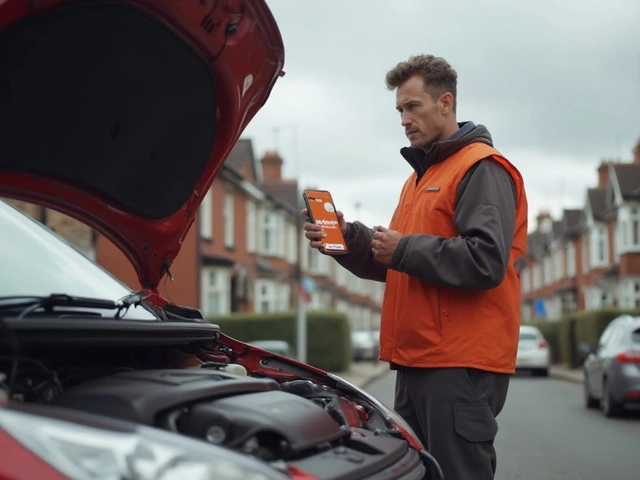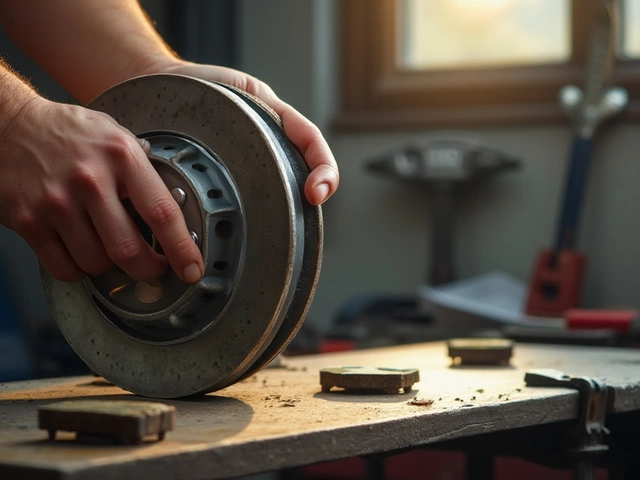Car Terminology Explained – Simple Definitions for Everyday Drivers
Ever felt lost when a mechanic says something like “your CV joint is worn” or “the ECU needs a flash”? You’re not alone. Knowing the basic words that pop up in service quotes, parts lists, and DIY videos saves you time, money, and a lot of frustration. Below you’ll find the most useful auto terms, explained in plain English, so you can understand exactly what’s going on under the hood.
Everyday Terms You’ll Hear at the Garage
Brake Pad – The friction material pressed against the rotor to slow the wheel. When they get thin, the brake pedal feels soft and you hear squealing. Rotor (or disc) is the metal disc the pad clamps onto. If the rotor is warped, you’ll feel pulsating brakes.
Clutch – The component that connects and disconnects the engine from the gearbox in a manual car. A slipping clutch feels like the engine revs but the car doesn’t accelerate. Transmission (or gearbox) is the set of gears that changes speed and torque.
Fuel Injector – The tiny nozzle that sprays fuel into the combustion chamber. A clogged injector causes rough idle and loss of power. Air Filter is the screen that keeps dust out of the engine; a dirty filter reduces fuel efficiency.
ECU (Engine Control Unit) – The computer that tells the engine how much fuel, spark, and air to use. A “flash” means updating its software to fix performance issues. Diagnostic Trouble Code (DTC) is the error number the ECU stores when something’s wrong.
Why Knowing the Lingo Saves You Money
When you understand the terms, you can spot unnecessary upsells. If a shop suggests replacing the entire “suspension system” for a minor “bent control arm,” you now know you’re only dealing with one component, not the whole assembly.
It also helps you shop for parts. Knowing the difference between “alloy rims” and “steel wheels” lets you compare price, weight, and corrosion resistance accurately. You’ll avoid buying the wrong size and saving on costly returns.
Finally, being able to describe a symptom with the right word speeds up the repair process. Saying “my car’s engine is misfiring on startup” is far clearer than “it’s acting weird.” The mechanic can zero in on possible causes like spark plugs, fuel pump, or ignition coil faster, which often means a lower labor bill.
Use this quick glossary as a reference next time you schedule a service or browse online parts. The more familiar you become with the language, the more confident you’ll feel walking into any garage. And if a term still confuses you, just ask the technician to explain it in plain English—most will be happy to help.
 20 June 2025
20 June 2025
Windshield Wipers vs Windscreen Wipers: What's the Real Difference?
Ever wondered if it's 'windshield wipers' or 'windscreen wipers'? This article breaks down the difference, gives a quick history of the term, and explains why you might hear both depending on where you live. Get practical tips for picking the right wipers and learn a few quirky facts you probably never knew. You'll also find out which term is used in which countries and what matters most when buying or maintaining wipers.
 12 June 2025
12 June 2025
Windscreen Wiper or Windshield Wiper? The Real Difference Explained
Is it windscreen wiper or windshield wiper? This article dives into the origin of both terms and which one you should actually use, depending on where you are. We'll talk about how the name choice connects to car parts, real-life differences in parts overseas, and some fun facts about wipers you probably never thought twice about. You’ll also get tips for keeping your wipers in top shape. No more confusion or awkward looks at the auto shop—get your answer here.






0